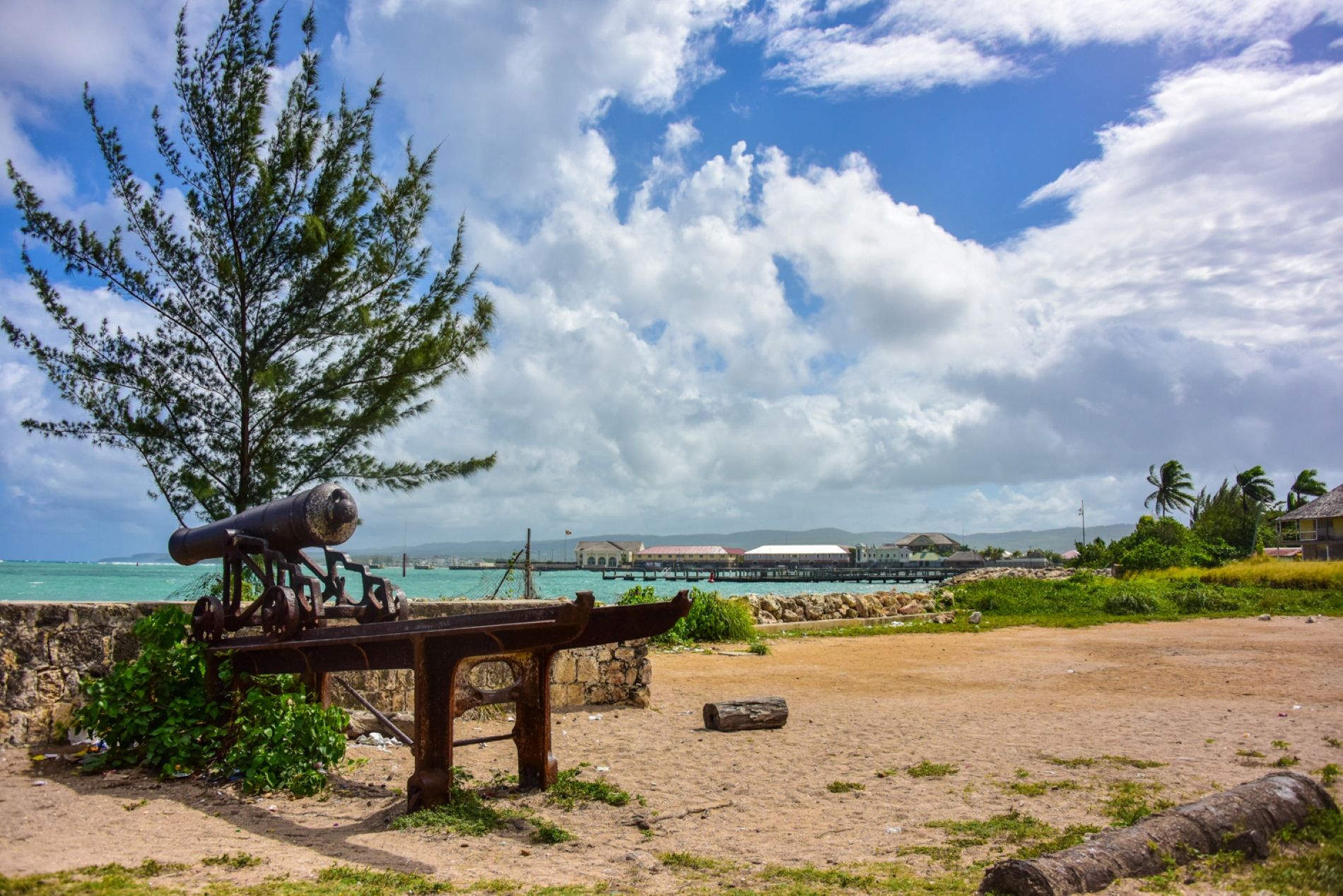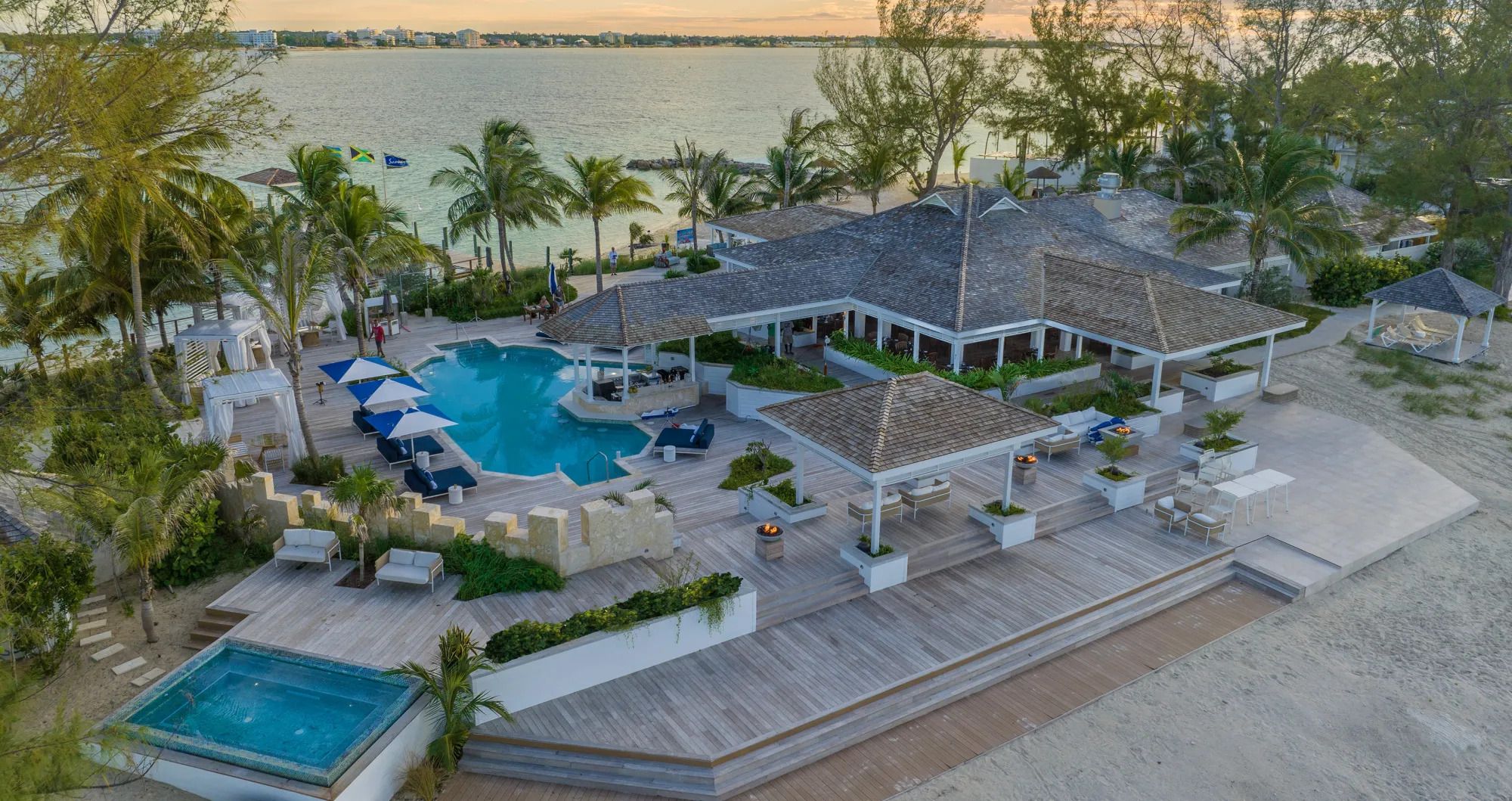Flag Of The Bahamas Explained: History & Symbolism
The mere mention of The Bahamas is enough to send a person’s mind catapulting onto powdery white shores. Just imagine how relaxed you’d be sunbathing on a pink sand beach and sipping on piña coladas with the waves rolling in ever so gently. As dreamy as they sound, beaches with sands of white and pink are a picturesque reality in the tropical archipelago of The Bahamas. So is the possibility of island hopping between any of the country’s 700 islands, or its cays which are too numerous to count.
When you top that off with the fascinating sights of Nassau, the capital city, the diverse selection of restaurants, bars, and nightlife, and the multitude of natural attractions to experience, you’ll see why visitors are so interested in learning everything there is to do in The Bahamas before they arrive. Your exotic vacation planning may even lead to questions about the meaning and background of this remarkable destination’s flag.
Here’s all you need to know to satisfy your curiosity about the flag history of The Bahamas ahead of your stay in the island paradise:
Expert tip: There’s nothing like the ice-cold cocktails served in The Bahamas! If you can’t wait until your next trip to this idyllic destination, you can try making delicious piña coladas at home with this authentic Caribbean recipe.
The history of the Bahamian flag
Flags can tell you a lot about the ideology and history of an island long before you set foot there. National flags are usually filled with symbolism and the flag of The Bahamas is no different.
The search for a new national flag began just before the nation gained independence from the United Kingdom on July 10, 1973. The Bahamian government initiated a contest and invited its citizens to submit their ideas for the development of the new flag. The intention was to select a single submission, but instead, various elements were extracted from individual drafts to create a final design.
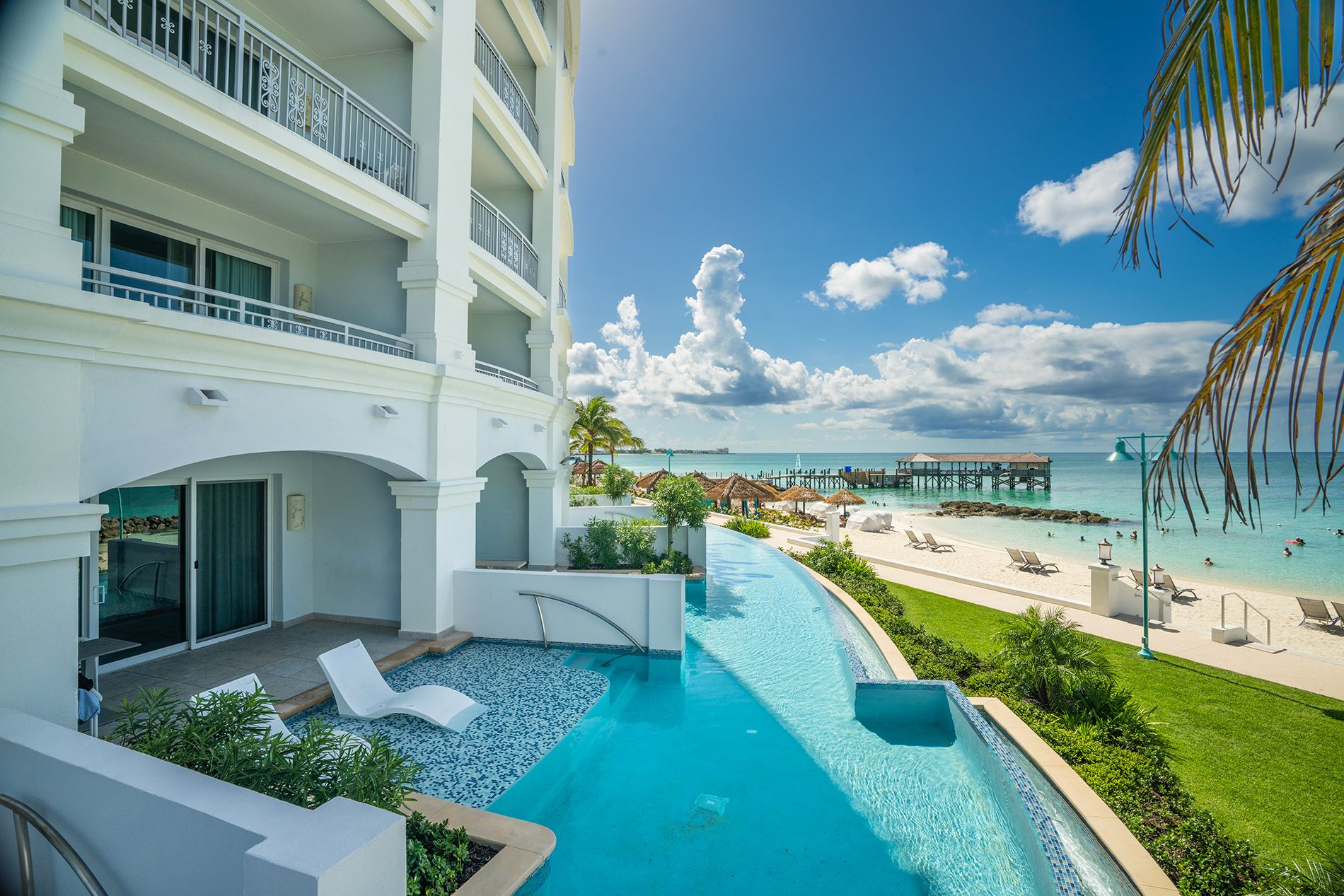
Picture: Breakfast is served at the swim-up suites of Sandals Royal Bahamian.
The design of the national flag of The Bahamas was credited to Rev. Dr. Hervis Bain – a Bahamian artist, and the method of how it was composed sent a message of inclusion, just as the country was coming into its own through independence. The same designer also created the coat of arms for The Commonwealth of The Bahamas, which is the nation’s official name.
Symbolism in the Bahamian flag
The symbolism of the Bahamian national flag is just as unique as its history. The flag of The Bahamas features a black equilateral triangle on the hoist side, and three horizontal bands: a gold middle stripe, and two aquamarine stripes at the top and bottom.
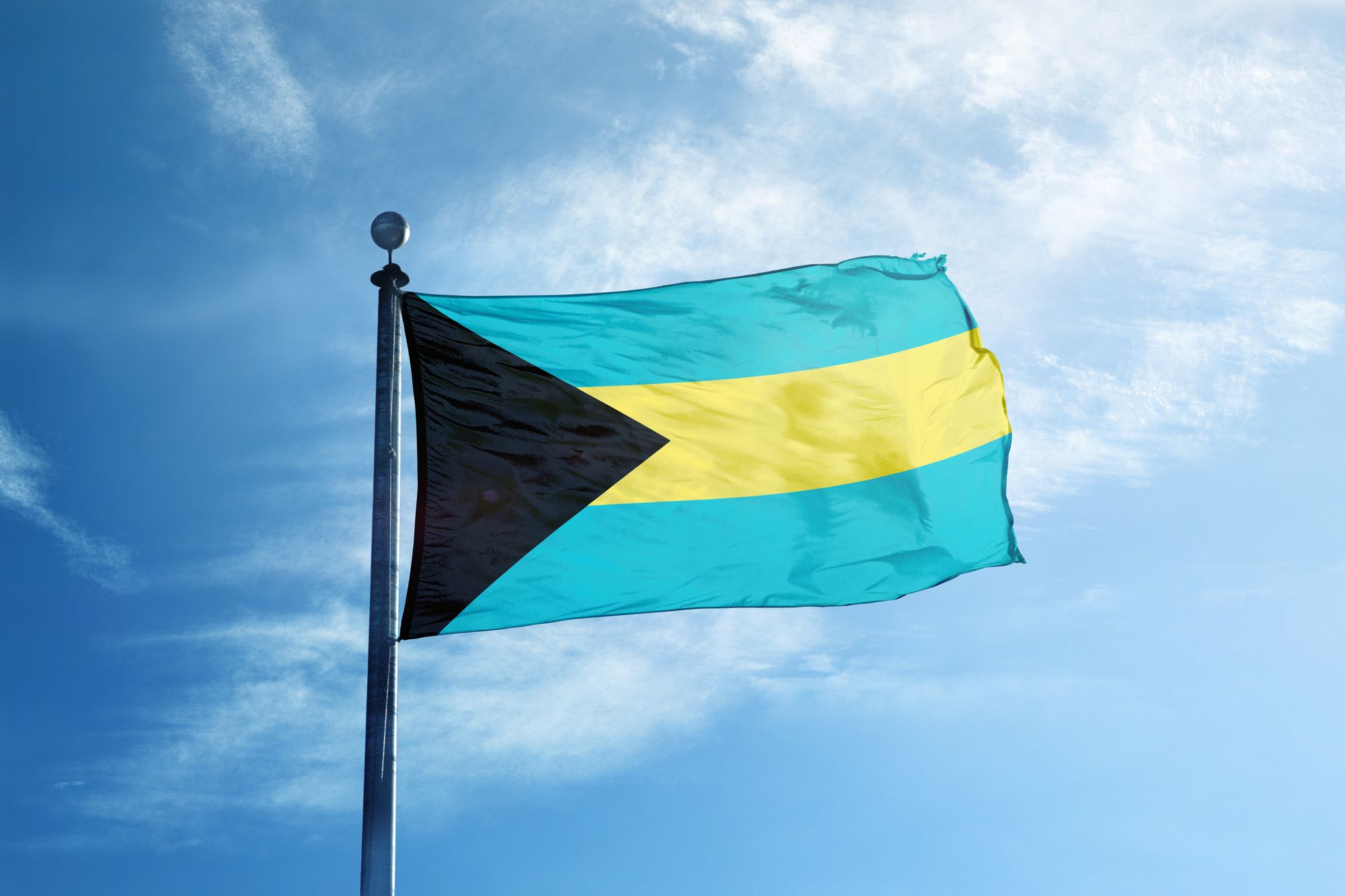
The golden stripe on the Bahamian flag represents the sun, the sand, and the abundance of natural resources that can be found in these islands.
The Bahamas is known and loved for having amazing beaches and the bluest waters. Strikingly turquoise, the Bahamian ocean is featured and admired all over the world. The ocean is represented on the flag by two aquamarine stripes.
The black triangle on the flag is positioned to the left and facing the center. This triangle is said to symbolize the strength, vigor, and force of the Bahamian people. They’re known for being incredibly friendly as well. The black triangle also represents the enterprising and determined nature of Bahamians, who have successfully navigated the many challenges their islands have faced over the years.
Good to know: Where is The Bahamas? The Bahamas, also known as The Bahama islands are located just north of the Caribbean Sea. This island grouping is still largely considered part of the Caribbean and is just an hour’s flight away from Miami.
Other flags of The Bahamas
Currently in use
Civil Ensign

The Bahamian civil ensign is easy to recognize with its red background, white St. George’s cross, and the national flag of The Bahamas in the canton. This flag may be flown on privately owned boats at sea, but most boat owners use the standard Bahamian flag.
War Flag

The Bahamian war flag has the same general design as the civil ensign with a red background and white St. George’s cross. The national flag is featured in the canton of the war flag, and a white equilateral triangle also appears on its right side.
Naval Ensign

The naval ensign of The Bahamas is typically flown on navy vessels to indicate nationality. This flag can be identified by its white background, the red cross of St. George, and the national flag in the canton.
Auxiliary Ensign

The flag of the auxiliary fleet of the navy is known as the Auxiliary Ensign. This flag can be recognized by its white background, blue cross of St. George, and the national flag featured in the canton.
Historical flags of The Bahamas
The Bahamas has an interesting flag history which includes 11 iterations of the Bahamian flag under British rule. In every design, the blue ensign and the badge of The Bahamas remain constant.
While in The Bahamas, you’ll see the official flag of the islands flying high over important Bahamian landmarks like Government House, the official residence of the island’s Governor-General, located in Nassau.
More than one reason to vacation in The Bahamas
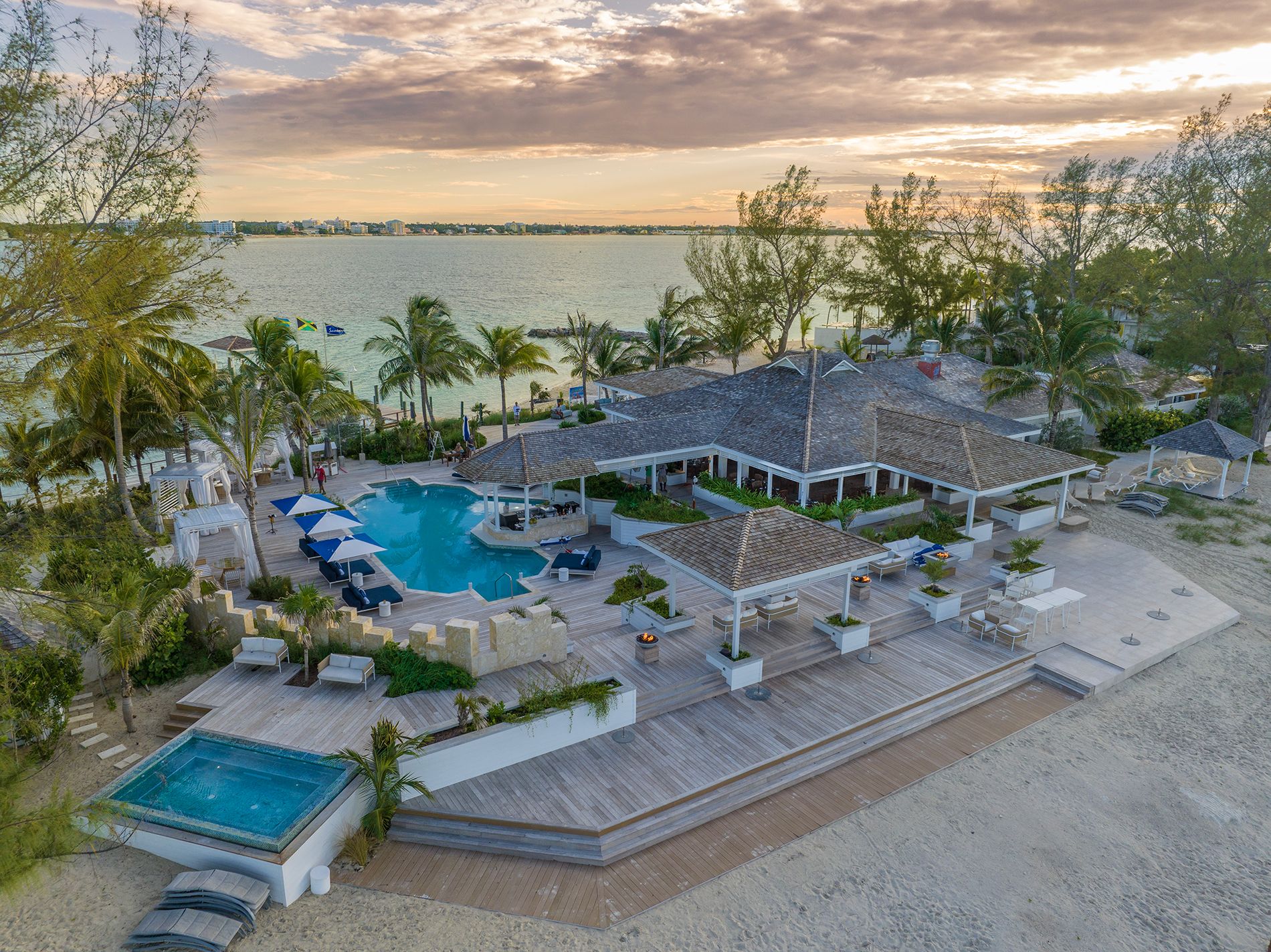
Picture: Enjoy lunch with an ocean view at the private offshore island of Sandals Royal Bahamian. The best part: all food and drinks are always included, always unlimited.
Finding out as much as possible about a destination you want to travel to will certainly add value to your vacation. You know the symbolism behind the country’s flag, but The Bahamas has many more secrets that can only be discovered by those that set foot on its sandy white shores.
If you’re planning a trip to The Bahamas and want to be as immersed as possible in all things Bahamian, you’d do well to stay at one of the all-inclusive resorts in Nassau. While vacationing right at the heart of the nation, you’ll be able to indulge in a bit of luxury and easily access some of the best attractions on this truly intriguing and beautiful island.
